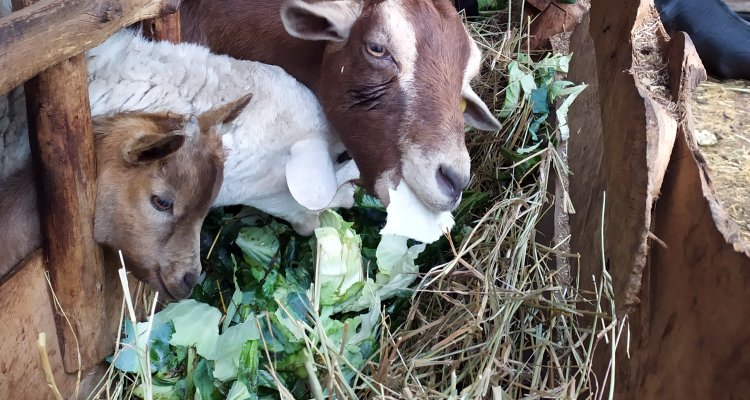
Project
Role of livestock in circular food systems in Kenya
PhD project by Dagmar Braamhaar. Livestock provides essential nutrients to prevent malnutrition and feed the growing human population in developing countries. This PhD will explore the role of livestock in circular food systems in Kenya, while meeting the dietary requirements of the population.
The consumption of animal-source food is expected to increase in developing countries due to the need for supply of essential nutrients to prevent malnourishment. However, animal-source food production negatively affects the environment (e.g. via greenhouse gas emissions, land use change, loss of biodiversity, etc.), and therefore should be produced in a more sustainable manner. A circular food system is seen as a promising way to use resources effectively and to reduce the impact on the environment.
One of the backbones of circular food systems is the utilization of low-opportunity cost feed (i.e. by-products, waste-products, grass resources) by livestock, who can turn these products into food, manure and other ecosystem services. Currently the contribution of livestock farming systems to circular food systems in Kenya is unknown. The aim of this study is to explore the role of livestock in circular food systems in Kenya, while meeting the dietary requirements of the population. A case study will be done in Nakuru County. The following objectives will be addressed:
- To identify the contribution of current farming practices of different livestock farming systems to circular food systems in Nakuru County
- To map the actors of the food system of Nakuru County and identify their contribution to circular food systems at the regional scale
- To assess the contribution of circular practices to the environmental pillar of sustainability and to explore synergies/trade-offs between the social and economic pillars in livestock farming systems in Nakuru County
- To design future circular food systems which minimises land use, while lowering environmental impacts and meeting the dietary requirements of a growing population in Nakuru county.
Via interviews with farmers and other actors (e.g. processors, distributors, retailers, etc.) of the food system of Nakuru county we want to identify the flow of products through the system and the circular practices applied. The concept of circularity addresses the environmental pillar of sustainability, but it is also important to look into the economic and social pillars of sustainability. Via the application of a sustainability assessment tool at livestock farming systems we will measure the effect of circular practices on performance, and the trade-offs and synergies within and between the different pillars of sustainability. With a linear optimization model, we aim to examine the contribution of animal-source food in a human diet, by using only low-opportunity cost feed, while minimizing land use and meeting the human nutritional requirements.